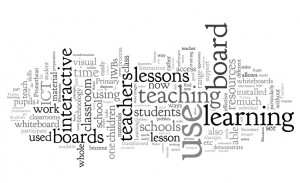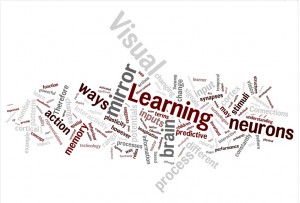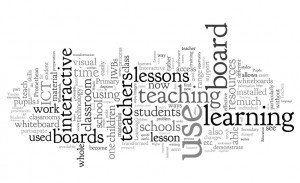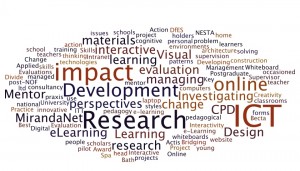Cuthell, J., & Preston, C. (2012). Tracking the stages of learning: concept maps as representations of liminal space. Themes in Science and Technology Education, 5(1/2), 79-94. Available online.
Preston, C.; Cuthell, J. P. (2012) MirandaMods: From Practice to Praxis in Informal Professional Learning Contexts. In C. Jimoyiannis (Ed.) Research on e-Learning and ICT in Education, pp 17-28. Springer, London.
Cuthell, J. P.; L.Cych; Preston, C. (2011) Learning in Liminal Spaces. Paper presented at Mobile learning: Crossing boundaries in convergent environments Conference, University of Bremen. Available online.
Pachler, N.; Cuthell, J. P.; Preston, C.; Allen, A; Pinheiro-Torres, C. (2010) ICT CPD Landscape Review: Final report. Becta ICT CPD Research Reports. Available online.
Cuthell, J. P. (2010). Classroom as Crucible and Catalyst. Case studies in pedagogy and praxis developing and supporting visual learning. In C. Crawford et al. (Eds.), Proceedings of Society for Information Technology & Teacher Education International Conference 2010 (pp. 1406-1411). Chesapeake, VA: AACE.
Cuthell, J. P.; C. Preston (2009) The Use of Concept Maps for Collaborative Knowledge Construction. Available online.
Cuthell J. P.; C. Preston, L.Cych, T. Keuchel (2009) iGatherings: from professional theory and practice to praxis in work based teaching and learning. WLE Centre, Institute of Education, University of London http://www.wlecentre.ac.uk/cms/index.php?option=com_content&task=view&id=343&Itemid=85
Cuthell, J. P. (2009) Thinking Things Through – Collaborative Online Professional Development. In: Lindberg, J. O & Olofsson, A. D. Online Learning Communities and Teacher Professional Development: Methods for Improved Education Delivery. Hershey, IGI Global
Cuthell, J. P. (2009) Integrating technology, pedagogy and theory: a resource for Visual Learning. In: Carlsen, R., McFerrin, K., Weber, R., Willis, D. A. (Eds.), Proceedings of SITE 2009 (pp. 3074 – 3078) Norfolk, VA: Association for the Advancement of Computing in Education
Cuthell, J. P. (2009) Thinking and Changing Practice: Collaborative Online Professional Development. In: Carlsen, R., McFerrin, K., Weber, R., Willis, D. A. (Eds.), Proceedings of SITE 2009 (pp. 2264 – 2269) Norfolk, VA: Association for the Advancement of Computing in Education
Cuthell, J. P. (2008) The Role of a Web-based Community in Teacher Professional Development. International Journal of Web Based Communities, Vol. 2, No. 8 2008, pp. 115 – 139. Geneva, Inderscience
Cuthell, J. P.; Preston, C. (2008) Expert ICT advisers considering their own ICT CPD experiences. In: Carlsen, R., McFerrin, K., Weber, R., Willis, D. A. (Eds.), Proceedings of SITE 2008 (pp. 3247 – 3250) Norfolk, VA: Association for the Advancement of Computing in Education
Cuthell, J. P.; Preston, C. (2008) Multimodal Concept Mapping in teaching and learning: a MirandaNet Fellowship project. In: Carlsen, R., McFerrin, K., Weber, R., Willis, D. A. (Eds.), Proceedings of SITE 2008 (pp. 1999 – 2007) Norfolk, VA: Association for the Advancement of Computing in Education
Cuthell, J. P. (2008) Online forums as a resource for teacher professional development: lessons from a web-based community of practice and influence. International Journal of Web Based Communities, Vol. 4, No. 3, 2008, pp. 359 – 365
Cuthell, J. P.; Preston, C. (2007) Braided Learning: Developments In An Online Community Of Practice. In: Kinshuk, Sampson, D. G., Spector, J. M., Isaias, P. (Eds.), Proceedings Of The IADIS International Conference On Cognition And Exploratory Learning In Digital Age (CELDA 2007) pp.79-84 IADIS Press
Cuthell, J. P., Preston, C. (2007) Perspectives on ICT CPD: Past, Present and Future. The experiential learning of advisers responsible for school teachers’ ICT CPD programmes. WLE Centre, Institute of Education London. Available online.
Cuthell, J. P. (2006) Ms. Chips and her Battle Against the Cyborgs. Embedding ICT in Educational Practice. In: O Murchu, D. & Sorensen, E. ‘Enhancing Learning Through Technology’. Hershey, Idea Group
Cuthell, J. P. (2006) Tools for Transformation: The Impact of Interactive Whiteboards in a range of contexts. In: Crawford, C. M., Carlsen, R., McFerrin, K., Price, J. Weber, R., Willis, D. A. (Eds.), Proceedings of SITE 2006 (pp. 1491 – 1497) Norfolk, VA: Association for the Advancement of Computing in Education
Cuthell, J. P. (2006) Online forums as learning resources: some case studies from MirandaNet. In: Proceedings of IADIS International Conference: Web Based Communities 2006 pp. 371 – 375.
Cuthell, J. P. (2006). Steering the Supertanker: Changing Teaching and Learning In: Computers in the Schools: Technology Applications in Education (2006) 23 1/2 Ed. Maddux, C. Binghamton, N.Y. The Howarth Press
Cuthell, J. P., Preston, C. (2005)‘Teaching in ICT-rich environments – using e-learning to create a knowledge base for 21st century teachers’, In: Leask, M. & Paschler, N. ‘Learning to teach using ICT in the Secondary School, 2nd Edition’. London Routledge
Cuthell, J. P. (2005). Beyond Collaborative Learning. Communal construction of knowledge in an online environment. In: Proceedings of Web Information Systems and Technologies, 2005, (pp. 529 – 536) INSTICC
Cuthell, J. P. (2005). What does it take to be active? Teacher participation in online communities. In: International Journal of Web Based Communities, Vol. 1, No. 3, 2005, (pp. 320-332) Geneva, Inderscience
Cuthell, J. P. (2005) The Impact of Interactive Whiteboards on Teaching, Learning and Attainment . In Price, J., Willis, D., Davis, N., & Willis, J. (Eds.), Proceedings of SITE 2005 (pp. 1353 – 1355) Norfolk, VA: Association for the Advancement of Computing in Education
Cuthell, J. P. (2004). Can technology transform teaching and learning? The impact of interactive whiteboards. (pp. 1133-1138) In Price, J., Willis, D., Davis, N., & Willis, J. (Eds.), Proceedings of SITE 2004 Norfolk, VA: Association for the Advancement of Computing in Education
Cuthell, J (2003). Next steps for ICT teacher education: ICT for active learning. In Price, J., Willis, D., Davis, N., & Willis, J. (Eds.), Proceedings of SITE 2003 (pp. 2740-2744). Norfolk, VA: Association for the Advancement of Computing in Education
Cuthell, J. P. (2003). Evaluation of an In-Service ICT Teacher Education Project. Proceedings of International Conference on Innovation in Higher Education. Kiev 2003
Cuthell, J. P. (2003) Virtual Learning In J. Kirjonen (Ed.). Knowledge work and occupational competence, (pp.23-37) Jyvaskyla, Finland: Institute for Educational Research.
Cuthell, J. P. (2002) Virtual Learning Ashgate Aldershot
Cuthell, J. P. (2002). Virtual Learning In: Journal of Informatics and Education Kratsova A (ed.). 11 – 2002 (pp. 2 – 16) Association for Informatics Education Moscow ISSN 0234 – 0453
Cuthell, J. P. (2002). A Community of Learners In: Distributed Cognition Karasavvidis I (ed.). Journal of Interactive Learning Research. 13 (1/2) (pp. 169–188) Association for the Advancement of Computing in Education Norfolk, VA
Cuthell, J. P. (2001). Virtual Learning? CAL01 Warwick University.
Cuthell, J. P. (2000). The Online Learner. Computer Education. Issue 94 Computer Education Group
Cuthell, J. P. (2000). Students vs Teachers: Computers as the Site of Conflict. Educating for the Third Millennium. Cheltenham & Gloucester College.
Cuthell, J. P. (1999). The House that Strauss Built. D.I.Y. in Cyberspace: Bejeaned Student Bricoleurs. Computer Education. Issue 91 (pp.19-21) Computer Education Group
Cuthell, J. P. (1999). The Autonomous Learner. Paper presented at CAL99 Conference, Institute of Education, University of London, UK. CAL99 Virtuality in Education Abstract Book Pp. 197-199 Elsevier Science
Cuthell, J. P. (1999). How do you learn? An 11-18 developmental perspective. ELSIN 4 European Learning Styles Information Network. University of Central Lancashire, Preston, United Kingdom. Available online.
Cuthell, J. P. (1998). What Teachers Think About IT. Computer Education. Issue 88, Pp. 16-19 Computer Education Group
Cuthell, J. P. (1998). Thumbs Up for the Digital Kids? Computers, Equality and Opportunity. MirandaNet: Institute of Education. University of London.
Cuthell, J. P. (1998). The House that Strauss Built. D.I.Y in Cyberspace: Bejeaned Student Bricoleurs. Media 98. Institute of Education. University of London.
Cuthell, J. P. (1997). Cyborgs Sitting in the Classroom. Writing the Future: Writing and Computers 10. Brighton
Cuthell, J. P. (1997). Teaching and Technological Change. The Lifelong Learning Office MirandaNet, for MicroSoft.
Cuthell, J. P. (1997). Patterns of Computer Ownership. (1997) Computer Education. Issue 86, Pp. 13-21. Computer Education Group
Cuthell, J. P. (1996). Teachers lag behind students. Times Educational Supplement, 29.11.96 London
Cuthell, J. P. (1996). Students, Computers and the Writing Process. Writing Conferences: Writing and Computers Association. European Association for Research on Learning and Instruction. Barcelona
Cuthell, J. P. (1991). The GIGO factor: Language, Learners and Computers Conference paper: Learning Technology Conference: DTI; Transcend Technology
Cuthell, J. P. (1990). Work Shadowing: towards the development of a model. Education & Training. Vol. 32 No. 4 MCB University Press
Cuthell, J. P. (1990). Work Shadowing. Training & Management Development Methods MCB University Press



